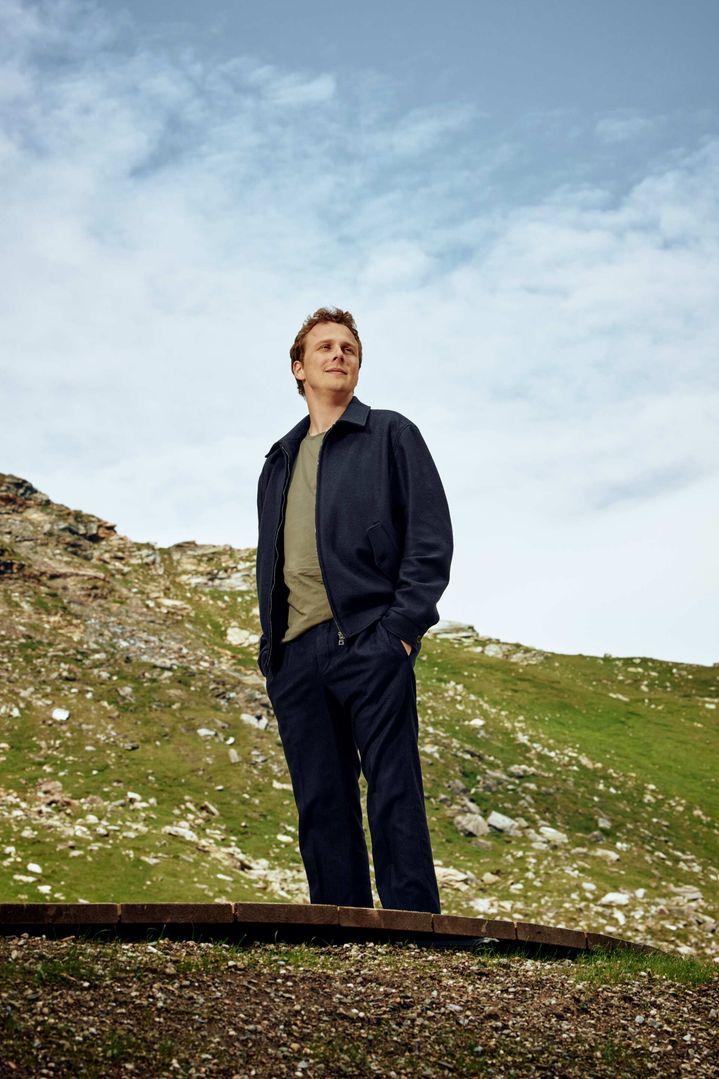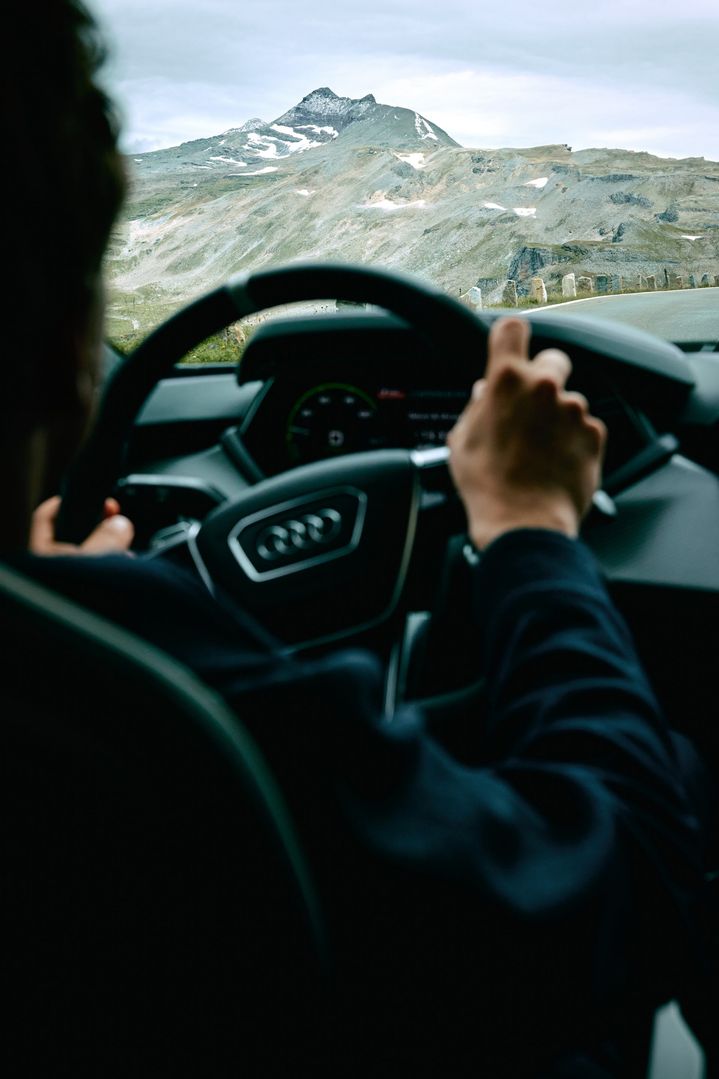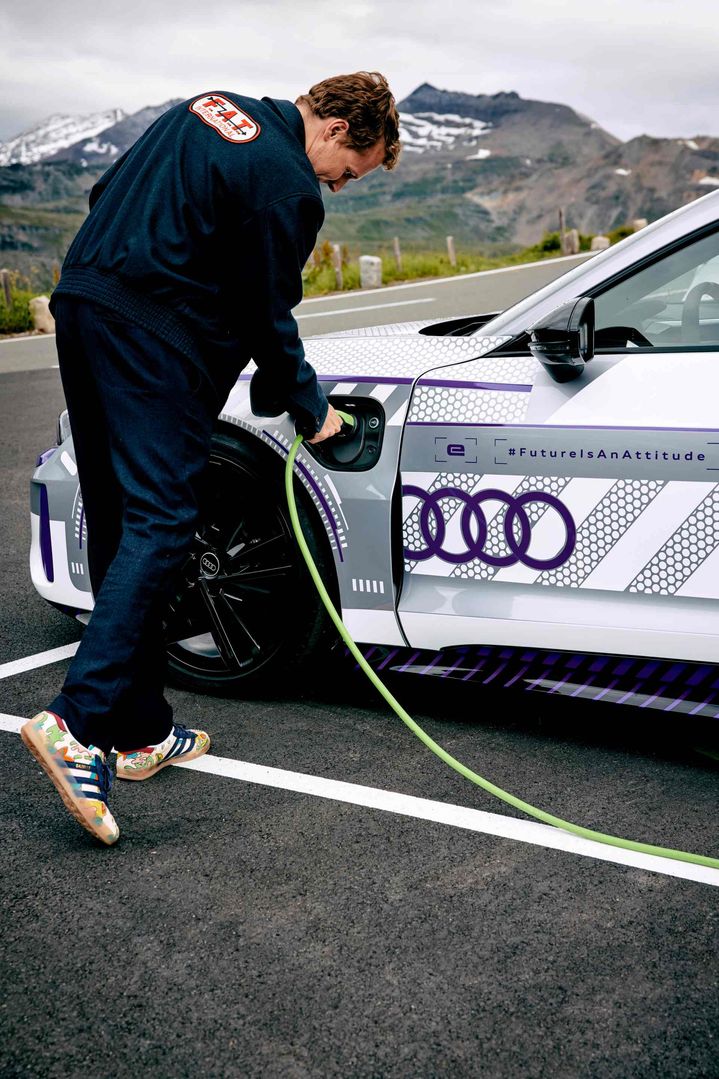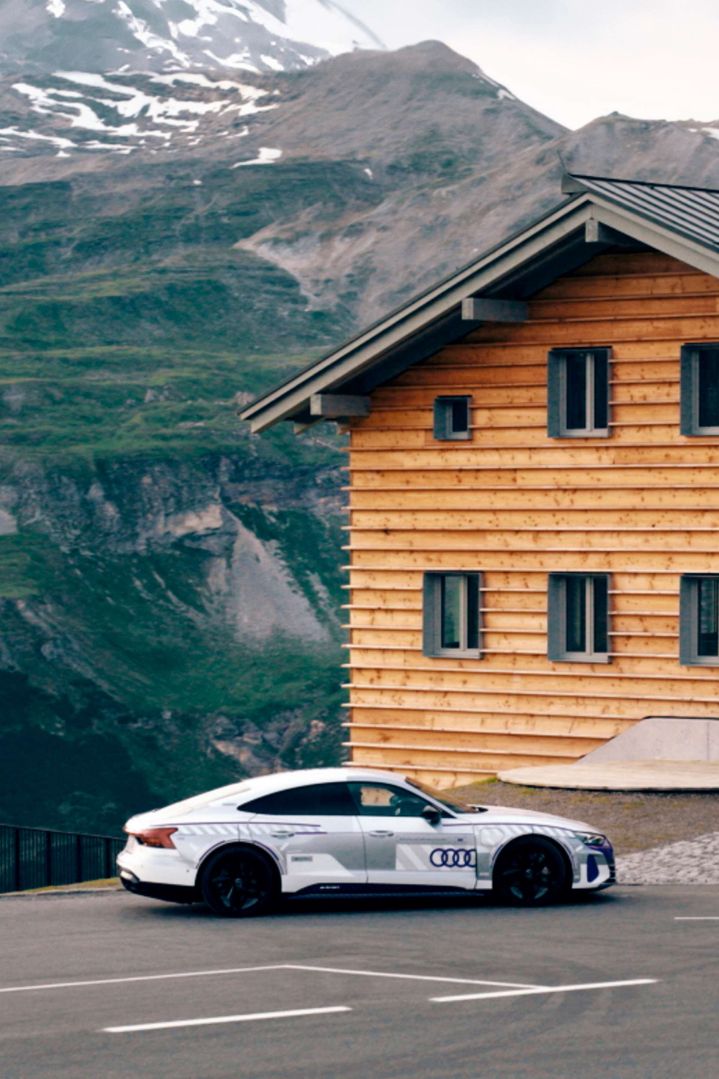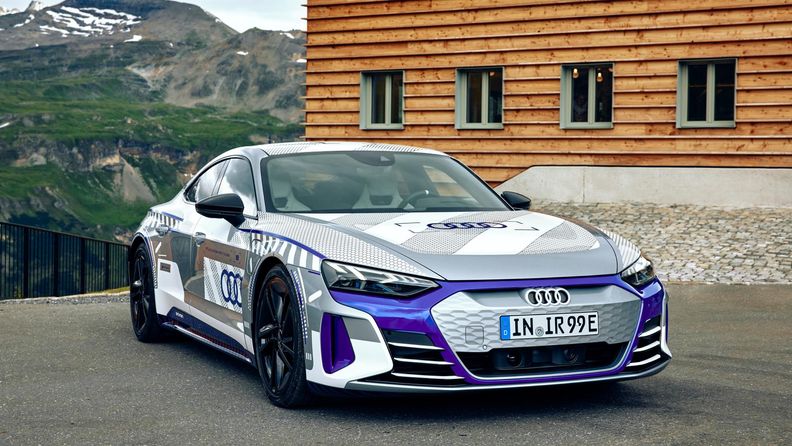“Enthusiasm for the car as a cultural artefact is undiminished”
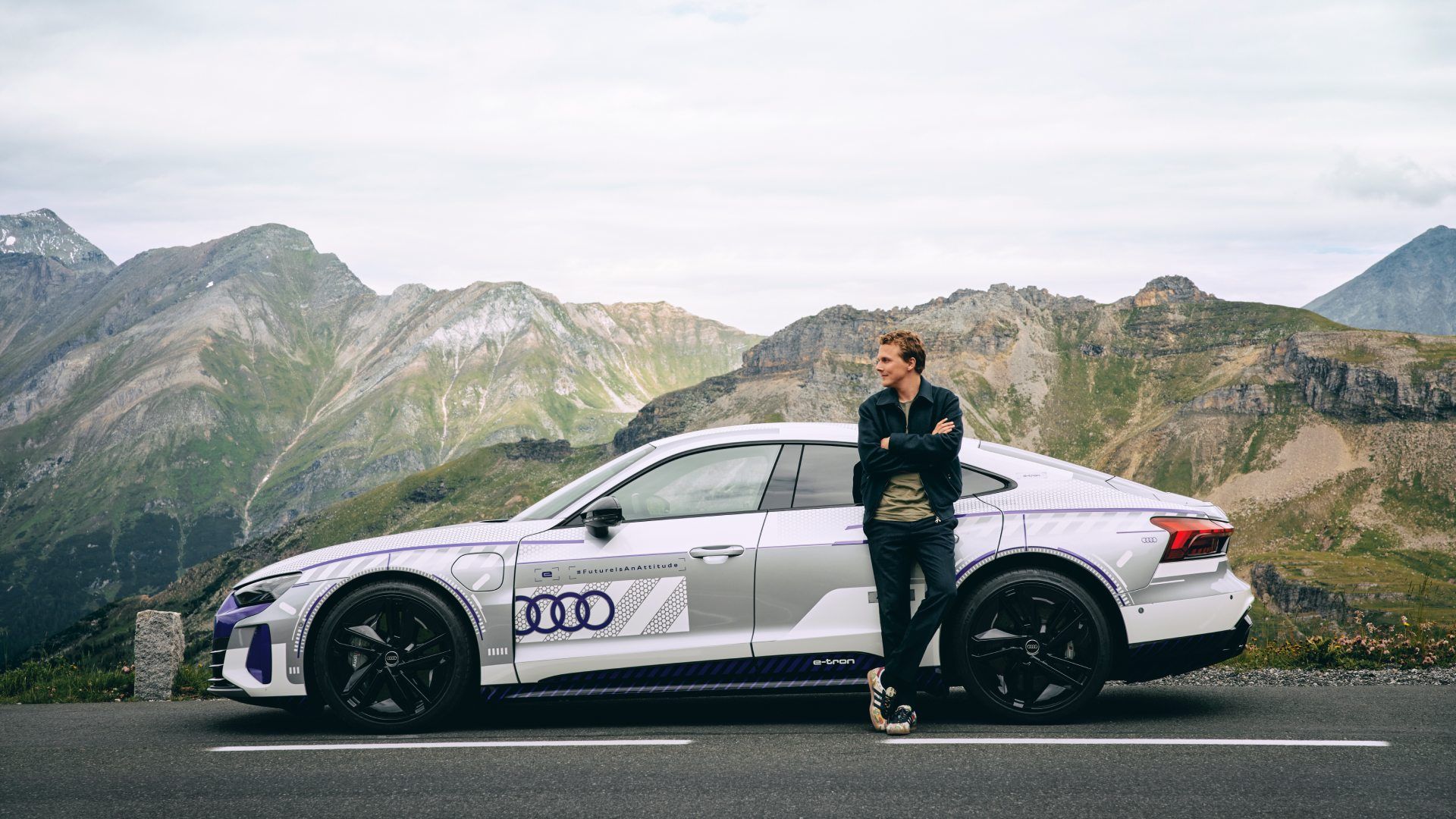
Audi RS e-tron GT: Power consumption (combined) in kWh/100 km: 21.1–18.4CO₂ emissions (combined) in g/km: 0CO₂ emission class: A
Audi RS e-tron GT: Power consumption (combined) in kWh/100 km: 21.1–18.4CO₂ emissions (combined) in g/km: 0CO₂ emission class: A
“I think it’s one of the most beautiful roads in Europe,” says Ferdinand “Ferdi” Porsche as he manoeuvres the Audi RS e-tron GT ice race edition round the hairpin bends of the Grossglockner High Alpine Road. Opened in 1935, the road winds its way up to an altitude of 2,500 metres. Today, it’s a monument to the art of engineering and a tourist attraction. It’s also served for decades as a “litmus test” for the auto industry. “If your new concept vehicle can make it up here, you’ve got a lot right in the development process,” explains Ferdi. Shortly after passing the road’s highest point, he adds, “And the best thing is that if you’re driving an EV, the battery recharges on the way down.”
The Audi RS e-tron GT passed the litmus test long ago, nevertheless, it is a special trip for Ferdi Porsche. There’s now an exclusive, limited “ice race edition” of the all-electric gran turismo that celebrates the close bond between Audi and the Ice Race, the historic motorsport event held on Lake Zell at the northern end of the High Alpine Road. “I like the combination of silver, white and purple, both inside and out, and the way the colours accentuate certain parts of the car.” When Audi unveiled the concept vehicle at the last Ice Race, it appeared alongside a historic Audi Sport quattro in the same look. “It was amazing. I think it’s important to always link progress back to a historical reference point.”
Audi e-tron GT: Power consumption (combined) in kWh/100 km: 21.6–19.6CO₂ emissions (combined) in g/km: 0CO₂ emission class: A
Audi e-tron GT: Power consumption (combined) in kWh/100 km: 21.6–19.6CO₂ emissions (combined) in g/km: 0CO₂ emission class: A
“I think it’s important to always link progress back to a historical reference point.”
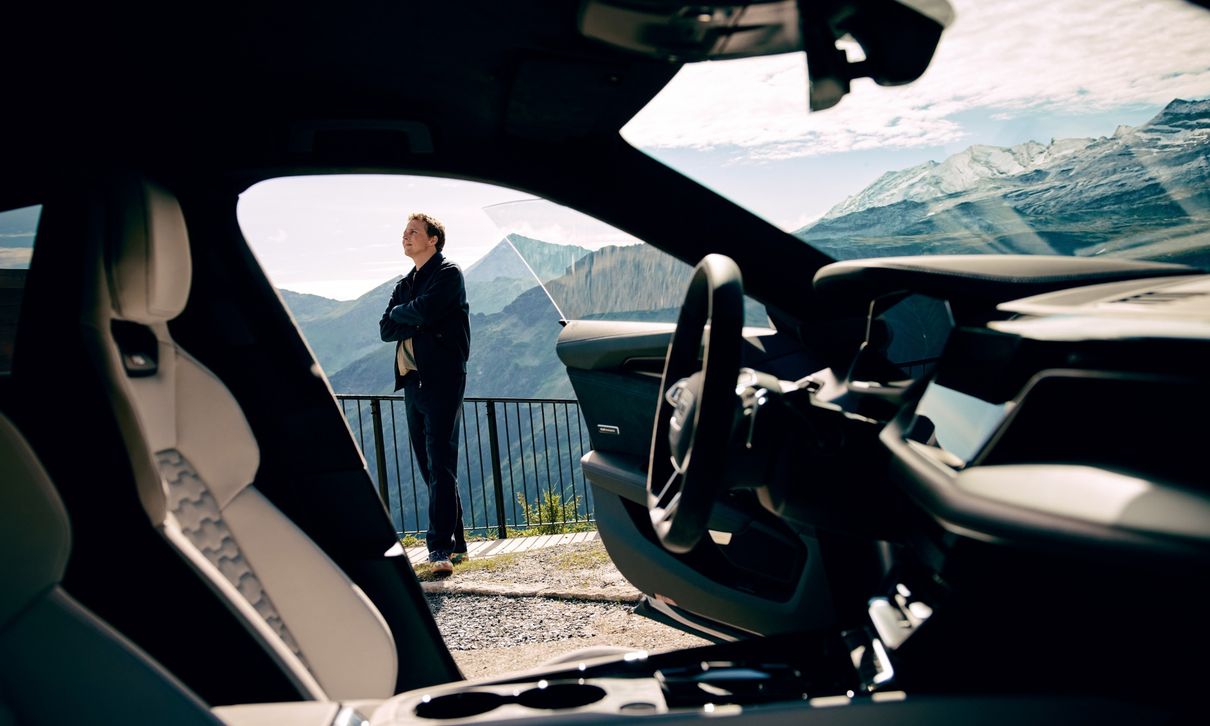
From 1937 to 1973, the “Zell am See International Motorcycle and Automobile Ice Race”, as it was then known, drew big crowds and was an important social event for the international motorsport elite. The spectacular event then fell dormant for around 45 years. “I didn't know much about it until my dad bought a car that came with a set of spike tyres.” Ferdi Porsche was fascinated by the story behind them, and in 2019, aged 25, he and a friend from uni relaunched the event. Today the winter festival is a permanent fixture in the calendar – for Audi and for many thousands of fans. “One time someone even came from New Zealand. We are very much open to other brands and new technologies, and want to use that as a way to build bridges from the past to the future.” Enthusiasm for the car as a cultural artefact is undiminished, he says.
E-mobility is an integral part of the Ice Race. E-skijoring, in which a vehicle pulls a skier down the piste, is actually the most competitive discipline, according to Porsche. All teams compete with the same e-vehicle, meaning it’s primarily a contest of skill – both behind the wheel and on the skis.
The Audi RS e-tron GT ice race edition

The Audi RS e-tron GT ice race edition signifies a new kind of personalisation. Dreamed up in the Audi exclusive ideas factory, it embodies the partnership between Audi and the Ice Race. In this video, Bernhard Neufeld, head of Audi exclusive, and Ferdinand Porsche, founder of the revived Ice Race, talk about the exclusive special model.
“Today, I can’t help but chuckle about it.”
Ferdi Porsche appreciates the impressive driving performance of EVs like the Audi RS e-tron GT. He thinks people’s love of cars could help drive efforts to make personal mobility more sustainable and fit for the future.
Audi RS e-tron GT: Power consumption (combined) in kWh/100 km: 21.1–18.4CO₂ emissions (combined) in g/km: 0CO₂ emission class: A
Audi RS e-tron GT: Power consumption (combined) in kWh/100 km: 21.1–18.4CO₂ emissions (combined) in g/km: 0CO₂ emission class: A
Three questions about e-mobility for Ferdinand Porsche
01. What were your first experiences with e-mobility like?
Today, I can’t help but chuckle when I think back about how nervous I was to begin with. I’d always be asking myself, “Will I find a charging point? Will everything work OK with the cable?” I can now say those worries were completely unfounded.
02. And how are things today?
I live in Vienna, where to be honest I only very rarely use the car. Usually I walk or cycle. For longer distances, I like driving an EV. I enjoy the peace and quiet, and it helps me relax.
03. What do you think the future holds?
Personal mobility will remain important. And a love of cars, which we are trying to sustain with events like the Ice Race, can help spur progress towards more sustainable mobility.
Ferdi Porsche is well versed in the art of building. Alongside bringing the Ice Race into the 21st century, he’s also completing a degree in architecture. “Architecture changes places, affects how people feel,” he says. After the first festival, he pondered how he could give the Ice Race a presence in the summer months too. “All we were missing was somewhere to do it.” Then the Mankei came on the market: a chalet high up on the High Alpine Road which his grandfather used to drive past and that Ferdi has many personal associations with. And suddenly everything fell into place: He bought the chalet and created exactly the kind of venue he thought was needed. “We wanted to preserve the chalet’s history, while also developing the location.”
And just like the festival, everyone is welcome. No matter whether they arrive on foot or by bike, vintage car or modern EV. It’s a place to meet people – perhaps by chance, perhaps due to a shared interest in cars or the Ice Race – and swap stories over a good coffee. While drivers will seek in vain for a petrol pump near the chalet, there are some electric charging points opposite. A lot of charging infrastructure has been installed on the High Alpine Road
over the past few years – including, partly at Ferdi Porsche’s initiative, the chargers outside the Mankei, as he explains while he hooks up his Audi RS e-tron GT ice race edition to one of them. A few walkers stop briefly to stare at the eye-catching Audi. While it’s charging, Ferdi Porsche sits on the chalet terrace, enjoying a good coffee – and the view of what might be the most beautiful road in Europe.
Audi RS e-tron GT: Power consumption (combined) in kWh/100 km: 21.1–18.4CO₂ emissions (combined) in g/km: 0CO₂ emission class: A
Audi RS e-tron GT: Power consumption (combined) in kWh/100 km: 21.1–18.4CO₂ emissions (combined) in g/km: 0CO₂ emission class: A
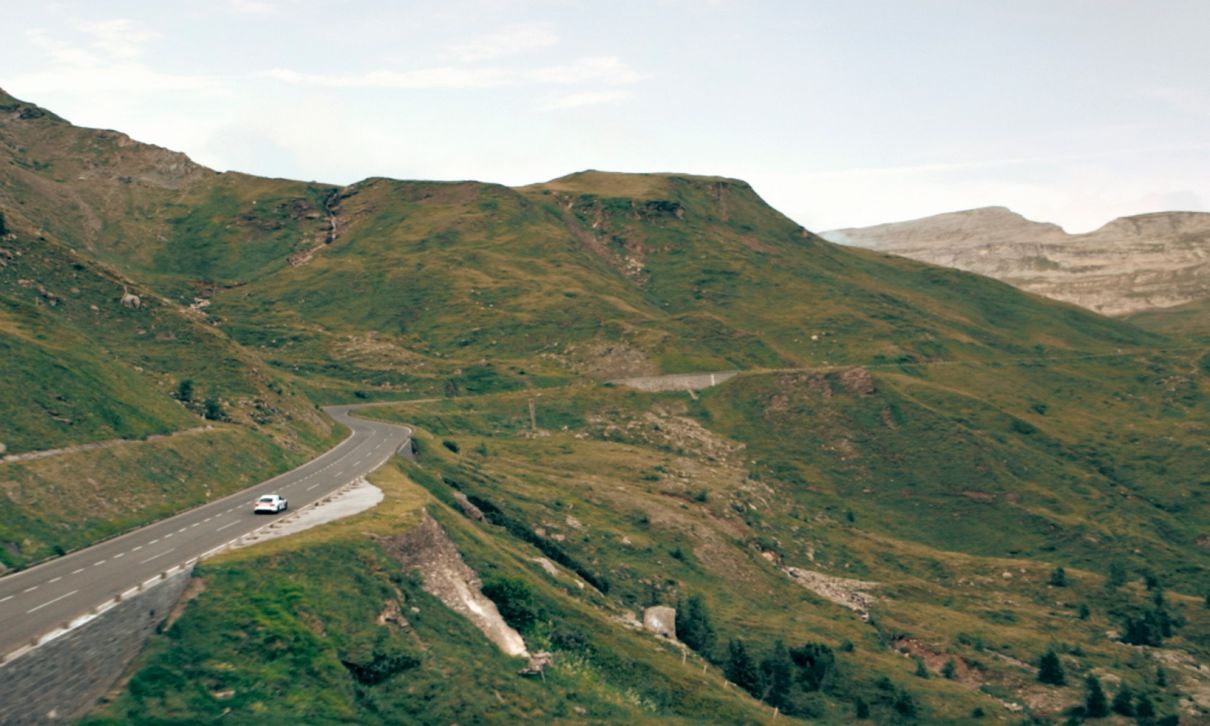
Audi RS e-tron GT: Power consumption (combined) in kWh/100 km: 21.1–18.4CO₂ emissions (combined) in g/km: 0CO₂ emission class: A
Audi RS e-tron GT: Power consumption (combined) in kWh/100 km: 21.1–18.4CO₂ emissions (combined) in g/km: 0CO₂ emission class: A
